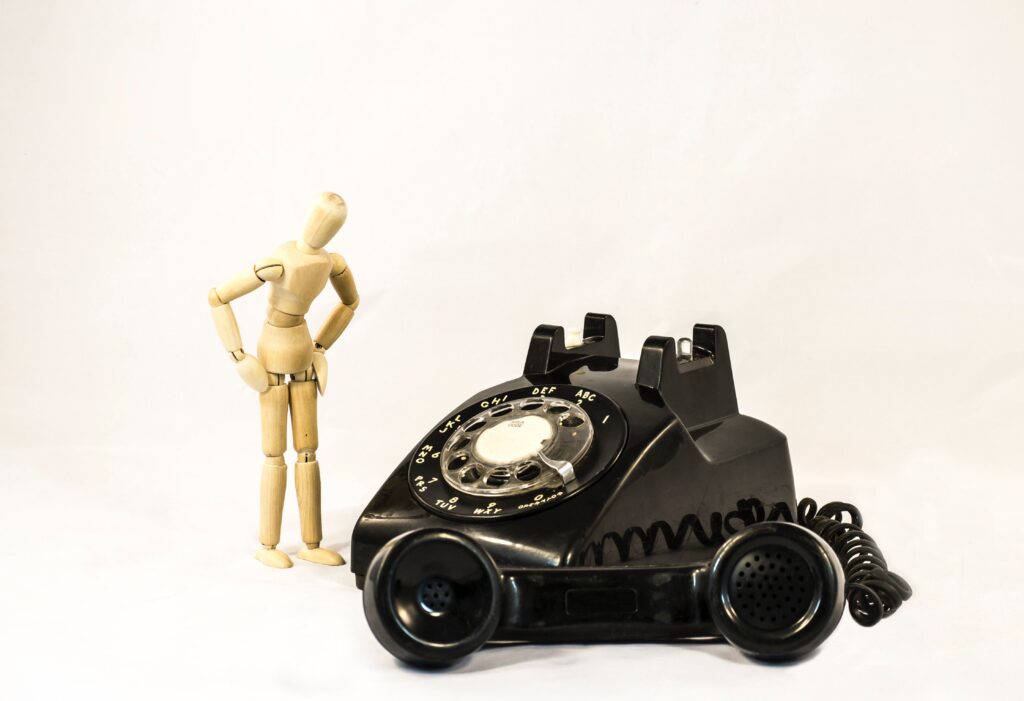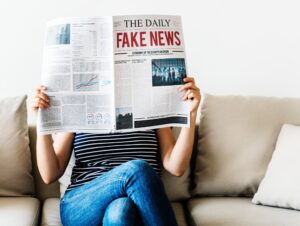Wyatt Bernier
We all know that information originates with experts, is transmitted through the media, and is eventually received by the general public. We also know that lately, the accuracy and reliability of information has been less than adequate, what with flat-earthers, anti-GMO groups, and anti-vaxxers running rampant. But what we cannot seem to figure out is who is responsible. If we were to ask academics, journalists, and common people, they would all blame each other, but the reality is that we are all at fault. Experts making unsubstantiated claims, journalists sensationalizing academics, and the general public mindlessly reading news are just a few of the issues plaguing the broken game of telephone we have been playing with scientific facts.
The first players in this game are the scientists and researchers, who shoulder a huge burden to make sure their claims and publications and completely accurate. Their first duty is to professional and accurate research, and failure can lead to the Wakefield situation. The complete story is quite lengthy and complicated, but long story short, Wakefield decided to forsake his medical oath by creating a faulty experiment to get false data which was used for the sole purpose of making money by suing vaccine companies, from which he made over 700,000 dollars, (Goldacre, Bad Science, 218). It also directly led to the huge popularity in anti-vax movements, which have now been classified as a top global health threat by WHO and cause thousands of easily preventable deaths every year. Although intentional misinformation is uncommon, even accidental misinformation can be quite damaging. Take Dr. Benjamin Spock’s 1946 hugely popular book Baby and Child Care, for example. Despite being chocked full of revolutionary advice based on decades of experience and research, Spock recommended that babies should sleep on their tummies, which he considered to be a trivial piece of advice. But simply due to the sheer number of people who read the best seller, those few lines led to thousands of avoidable crib deaths, (with some estimates being much higher: “Facing the Evidence”). Another growing issue with academia is the lack of funding for replication of studies in order to verify their findings. While ground-breaking research will receive money hand over fist, there is little support for groups verifying whether a study has actually discovered something or if it is just a fluke, and this lack of support can lead to mistakes slipping through the cracks. (Schulson).
From there the burden is on the media, whose obligations have shifted from truth and the public good to money and fame in recent years. Eager to capture readers with snappy headlines, journalists can often misinterpret scientists, and without the rigorous peer-reviewing process that academic publications go through, mistakes in media publications are far more common either on purpose or by accident, (Grimminck). Take the case of The Times (London), who in March of 2006 proclaimed that cocaine use had doubled in schools with the flashy headline “Cocaine Floods the Playground,” (Bad Science, 193-197). They took data from a then recent survey which noted that the number of students who answered yes to having used cocaine had risen from 1% to 2%, or doubled. What the journalist failed to mention was that these numbers were rounded from 1.4% and 1.9% respectively, (meaning it increased by a third, not doubled), and that this was a survey of over 9,000 students from 305 middle schools, meaning that the 0.5% increase correlated with about 45 students taking up cocaine. Perhaps the headline should have read ‘0.15 new cocaine users at average middle school’. In any case, the data was there and anyone who knew what they were doing could have properly decoded it, but enraged parents called schools and interrogated their children all because a journalist was either bad at their job or just wanted their five seconds of fame.
The final line of defence against fake science is us, and we are failing miserably. As the public, we have duties to critically evaluate academic and news publications and get information from credible sources. But instead, we tend to skim headlines instead of reading the full articles and related sources, (anti-GMO’s), we elevate the status of celebrities such that we trust them more than the entire scientific community, (anti-vaxxers), or at worst, we bury our heads in the sand and ignore everyone else in favour of our own amateur theories, (flat-earthers). We may not have the ability to find very field specific flaws in a study’s equations or procedures, but we are more than capable of understanding the parameters of a scientific study or newspaper article. The gender wage gap is a good example, where the pay differential between women to men figure can range anywhere from 69¢ (https://www.canadianwomen.org/the-facts/the-wage-gap/) to 95¢ cents (https://www.prageru.com/video/there-is-no-gender-wage-gap/) depending on what the study actually measures. That is why it is extremely important for readers to carefully examine the details showing what the numbers actually mean, which does not require more than basic literacy. Skipping this step is what causes people to erroneously believe headlines claiming women are paid almost two-thirds solely on the basis of sexism, (which is certainly a contributing factor), but without considering the plethora of additional factors including hours worked, overtime hours, position, education, risk, ability to move, maternity/paternity leave, region, job field, etc…. All studies in all fields run the risk of having multiple variables present, but putting just a little bit of effort into analyzing and verifying what we read every day could substantially increase the quality of our news.
So at the end of the day, we are all responsible for the reliability of academic news. Scientists need to make sure their experiments and papers are well made and clearly written, journalists need to make sure that truth is their goal and not money, and above all else, we the public need to fact check and hold academics and journalists accountable when necessary. If each player takes it upon themself to pass on information as accurately as possible, it is possible to have a successful game of telephone.
Works Cited & Referenced:
“Facing the Evidence – Part One.” ABC News, Australian Broadcasting Corporation, 24 Oct. 2006, www.abc.net.au/radionational/programs/healthreport/facing-the-evidence—part-one/3345712#transcript
“The Facts about the Gender Wage Gap in Canada.” Canadian Women’s Foundation, Aug. 2018, www.canadianwomen.org/the-facts/the-wage-gap/
“The Gender Wage Gap and Equal Pay Day, 2018.” Women and Paid Work, Government of Canada, Statistics Canada, 23 Nov. 2018, www150.statcan.gc.ca/n1/pub/89-28-0001/2018001/article/00010-eng.htm
Goldacre, Ben. Bad Science. Faber and Faber Inc., 2010 (This book does a great job at explaining how alternative medicine industries exploit the weaknesses of the scientific community, the media, and the general public. Also contains a good summary of the Wakefield scandal and the various ways it has been debunked.)
Grimminck, Robert. “Top 10 Disgraced Journalists.” Toptenz.net, Toptenz.net, 9 July 2018, www.toptenz.net/top-10-disgraced-journalists.php
“How Many People Die from Vaccine Preventable Diseases These Days?” VAXOPEDIA, VAXOPEDIA, 10 June 2018, vaxopedia.org/2018/06/10/how-many-people-die-from-vaccine-preventable-diseases-these-days
Israel, Solomon. “StatsCan on Gender Pay Gap: Women Earn 87¢ to Men’s $1.” CBCnews, CBC/Radio Canada, 8 Mar. 2017, www.cbc.ca/news/business/statistics-canada-gender-pay-gap-1.4014954
Schulson, Michael. “Creating Incentives to Address the Replication Crisis in Science.” Undark, 11 Sept. 2017, undark.org/article/replication-crisis-funding/
Sommers, Christina Hoff. “There Is No Gender Wage Gap!” PragerU, 6 Mar. 2017, www.prageru.com/video/there-is-no-gender-wage-gap/
Taylor, B, et al. “Autism and Measles, Mumps, and Rubella Vaccine: No Epidemiological Evidence for a Causal Association.” Lancet, vol. 353, no. 9169, 12 June 1999, pp. 2026–2029
“Ten Health Issues WHO Will Tackle This Year.” World Health Organization, World Health Organization, www.who.int/emergencies/ten-threats-to-global-health-in-2019
Wakefield, AJ, et al. “RETRACTED: Ileal-Lymphoid-Nodular Hyperplasia, Non-Specific Colitis, and Pervasive Developmental Disorder in Children.” The Lancet, vol. 351, no. 9103, 28 Feb. 1998, pp. 637–641., doi:10.1016/s0140-6736(97)11096-0

